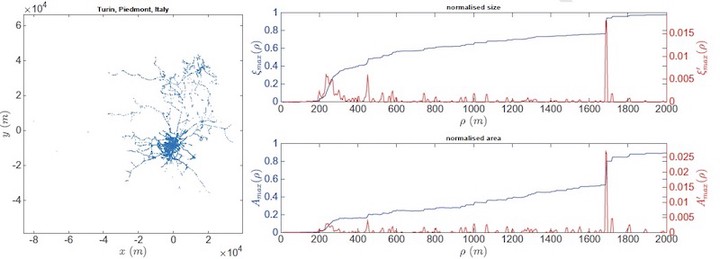Characterisation and comparison of spatial patterns in urban systems: A case study of U.S. cities

Abstract
Understanding the morphology of an urban system is an important step towards unveiling the dynamical processes of its growth and development, which can be achieved through a study of its transportation system. Without doubt, transportation is the foundation of every urban system, and it is a crucial component that enables diverse social and economic functions within a city. In this paper, we studied the spatial pattern of 53 cities in the U.S. by analysing its distribution of public transport points, using a method based upon clusters of percolation known in statistical physics. Our analysis revealed that different spatial distributions of points can generally be classified into four groups with distinctive features: clustered, dispersed, or regularly distributed. From visual inspection, we observed that cities with regularly distributed patterns do not have apparent centre. This is in contrast to the other two types where monocentric (or star-node structure) can be clearly observed. In particular, our results provide quantitative evidence on the existence of two different forms of urban system: well-planned and organically grown. In addition, we had also investigated into the spatial distribution of another important urban entity—the amenities, and found that it possessed universal properties regardless of the city’s spatial pattern type. This result has an important implication: urban dynamics cannot be controlled at the local scale even though regulation has been meted out at the scale of the entire urban system. Furthermore, interesting relationships between the distribution of amenities within the city and its spatial pattern are detailed in the paper.